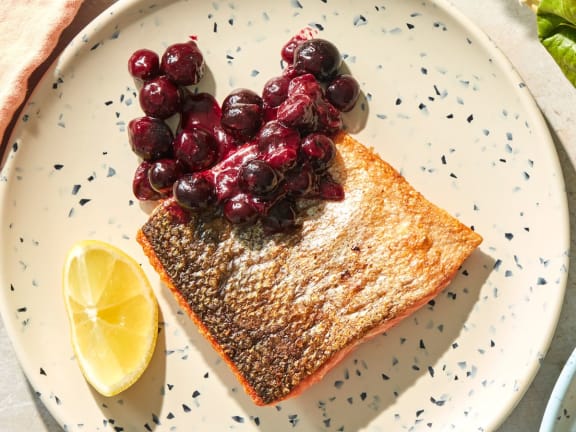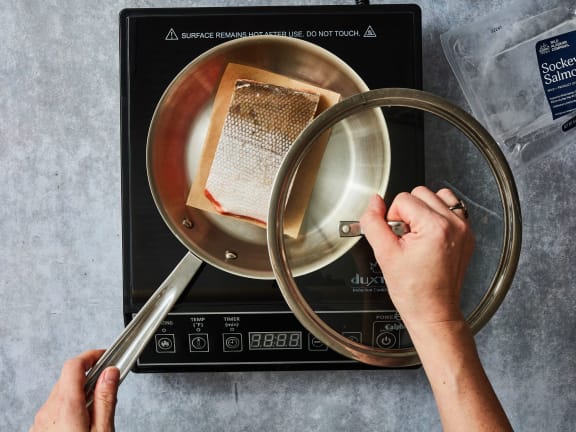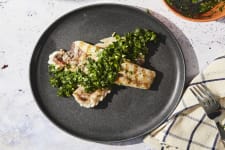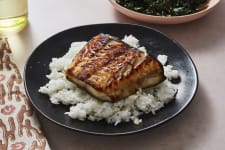Yes, you can eat the skin of wild-caught Alaskan salmon. In a salmon fillet, the skin is the part that contains the highest concentration of omega-3 fatty acids.
When pan-fried in a hot pan, crispy skin salmon can also be a dynamic addition to any meal, adding texture and flavor to any dish. But even when salmon skin isn’t crispy, you may enjoy eating it with the fillet.
Is salmon skin good for you?
Omega-3 fatty acids in the form of DHA and EPA are some of the most prized nutrients in wild-caught salmon and other marine species. A high concentration of omega-3 fatty acids can be found in fish skin, so eating salmon skin ensures that you’re consuming all the nutrients that a salmon fillet has to offer. Omega-3s can be found in the rest of the fillet in lower concentrations, too.

Is it safe to eat salmon skin?
The general concerns around eating fish skin stem from the fact that PCBs (polychlorinated biphenyls) are typically concentrated in fattier parts of the fish such as the organs, the head, and the skin.
Salmon from Alaska is low in toxic environmental contaminants like PCBs — well below safety guidelines set by the FDA, according to data collected by the State of Alaska Department of Environmental Conservation Fish Monitoring Program.
Salmon Skin Benefits for Cooking
Leaving on the salmon skin while cooking has a variety of practical and culinary benefits. When grilling or pan-frying salmon, the skin can add a deliciously crispy, crunchy layer of texture to the meal.
Cooking with salmon skin also helps prevent the fish from drying out, as the fatty layer of skin serves as a protective barrier between the lean fillet and heat source. Skin-on fillets will retain more moisture and help you cook a flakier, more tender fillet.







